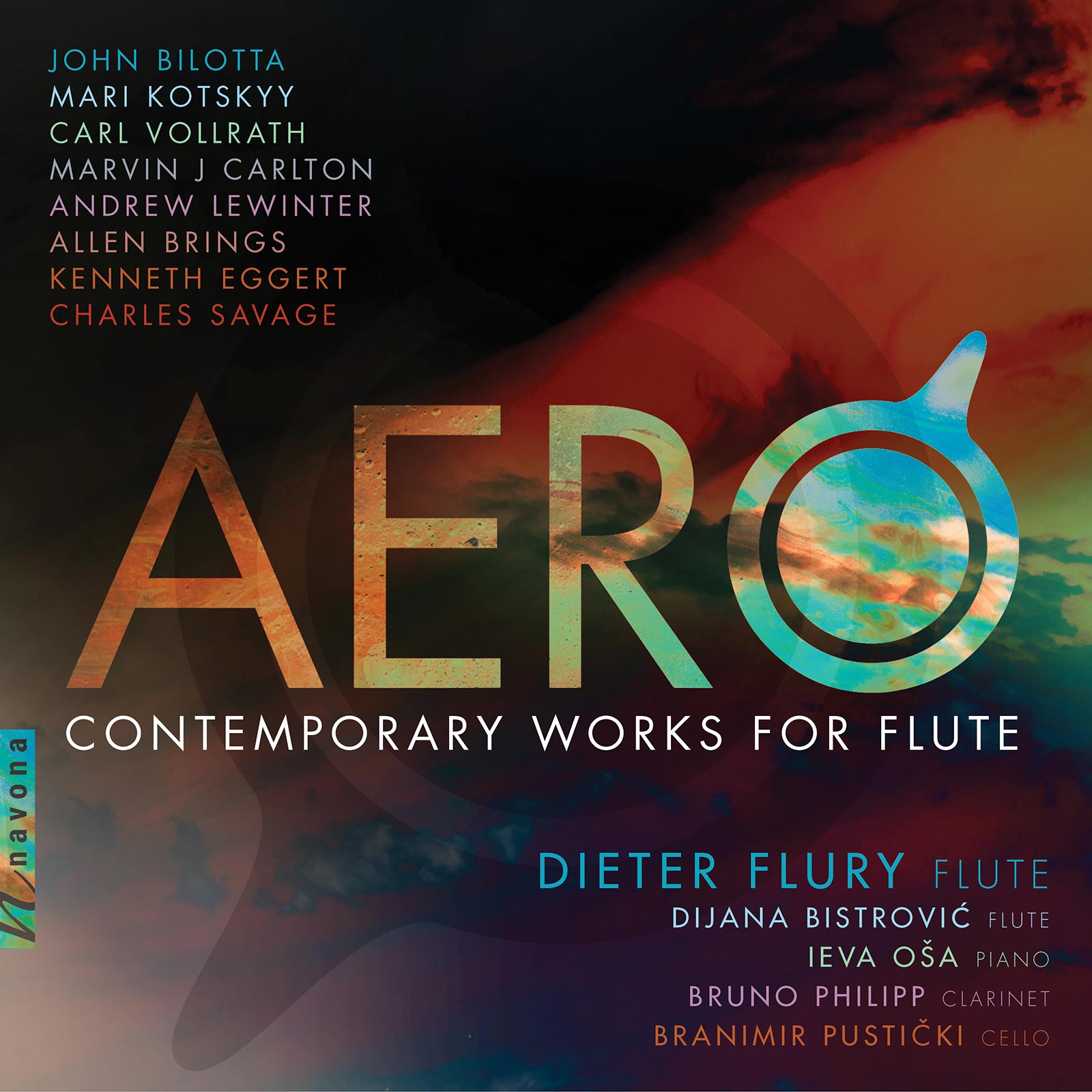
Share Album:
Aero
John Bilotta composer
Mari Kotskyy composer
Carl Vollrath composer
Marvin J Carlton composer
Andrew Lewinter composer
Allen Brings composer
Kenneth Eggert composer
Charles Savage composer
Dieter Flury flute
Dijana Bistrović flute
Ieva Oša piano
Bruno Philipp clarinet
Branimir Pustički cello
From Mozart’s concertos to Jethro Tull’s “Aqualung,” the flute has served as a versatile tool for conveying the spectrum of human emotion. On AERO, flutist Dieter Flury puts decades of study and a handmade golden flute by Yamaha to work to breathe life into works by contemporary composers and spark the imaginations of listeners.
John Bilotta’s Capricci gives the flute a virtuosic encore with three contrasting sections full of syncopation and off-beat gestures. Mari Kotskyy’s Colors offers a cheerful musical landscape filled with conversational harmonies between flute, piano, and clarinet. Three Lais by Allen Brings envisions a poet, alone in a world of sand and stone, reading texts in an ancient tongue. The flute’s delicate side is highlighted by Romance for Flute and Piano by Marvin J. Carlton, a gentle dance that pleases the ear. Ondine’s Flute by Kenneth Eggert depicts a mermaid atop a rock, waves crashing around her as she plays her song. Andrew Lewinter’s Waltz for Flute and Cello brings the two instruments together with a tonal, three-part structure, and Charles Savage’s Mad Rush to the End shows off the power of two flutes with a drive that creates a unified “super-flute.” Carl Vollrath’s The Glass of Absinthe showcases the instrument’s ability to illustrate by capturing the mood of Degas’ painting of the same name.
Over his storied career, Flury has served as Principal Flute of the Vienna Philharmonic Orchestra, soloist with orchestras the world over, and recording artist for a slew of albums from Baroque to contemporary. Behind the scenes, he’s also served as Artistic Director and General Manager of Vienna Philharmonic and a professor at the University of Music and Performing Arts in Graz.
Listen
Stream/Buy
Choose your platform
"A dizzying display of highly skilled adventurousness."
Performance Video
John G. Bilotta - Capricci | Dieter Flury, flute; Ieva Oša, piano
Track Listing & Credits
| # | Title | Composer | Performer | |
|---|---|---|---|---|
| 01 | Capricci | John Bilotta | Dieter Flury, flute; Ieva Oša, piano | 5:05 |
| 02 | Colors | Mari Kotskyy | Dieter Flury, flute; Ieva Oša, piano; Bruno Philipp, clarinet | 5:15 |
| 03 | The Glass of Absinthe | Carl Vollrath | Dieter Flury, flute; Ieva Oša, piano | 8:52 |
| 04 | Romance for Flute & Piano | Marvin J. Carlton | Dieter Flury, flute; Ieva Oša, piano | 6:49 |
| 05 | Waltz for Flute & Cello | Andrew Lewinter | Dieter Flury, flute; Branimir Pustički, cello | 6:41 |
| 06 | 3 Lais: No. 1, — | Allen Brings | Dieter Flury, flute | 2:46 |
| 07 | 3 Lais: No. 2, — | Allen Brings | Dieter Flury, flute | 1:25 |
| 08 | 3 Lais: No. 3, — | Allen Brings | Dieter Flury, flute | 2:36 |
| 09 | Ondine's Flute | Kenneth Eggert | Dieter Flury, flute | 4:56 |
| 10 | Mad Rush to the End (Arr. for Flute Duet) | Charles Savage | Dieter Flury, flute; Dijana Bistrović, flute | 3:32 |
Recorded December 9 & 19-21, 2019 at Blagoje Bersa Concert Hall in Zagreb, Croatia
Session Producer Krešimir Seletković
Session Engineer Jan Košulič (Track 5 - 10)
Session Engineer Filip Vidović (Track 1 - 4)
Addtl. Editing (track 3) Krešimir Seletković
Executive Producer Bob Lord
Executive A&R Sam Renshaw
A&R Director Brandon MacNeil
A&R Danielle Lewis, Morgan Santos, Quinton Blue
VP, Audio Production Jeff LeRoy
Recording Sessions Director Levi Brown
Audio Director, Editing & Mixing (track 3) Lucas Paquette
International Recording Sessions Manager, Editing & Mixing (tracks 1, 2, 4-10), Mastering Jan Košulič
VP, Design & Marketing Brett Picknell
Art Director Ryan Harrison
Design Edward A. Fleming
Publicity Patrick Niland, Sara Warner
Artist Information
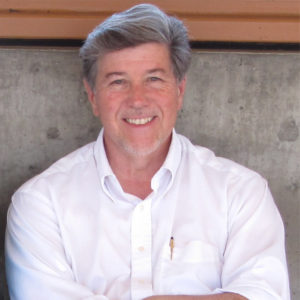
John G. Bilotta
John G. Bilotta was born in Waterbury, Connecticut, but has spent most his life in the San Francisco Bay Area having attended the University of California at Berkeley and, later, the San Francisco Music and Arts Institute where he studied composition with Frederick Saunders.
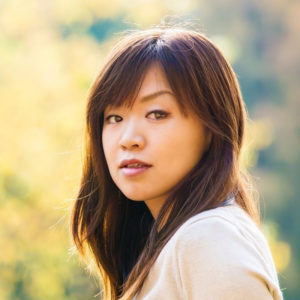
Mari Kotskyy
Mari Kotskyy is a New York-based award-winning composer, arranger and pianist, originally from Hokkaido, Japan. Her works have been performed throughout Asia, North America, and Europe.
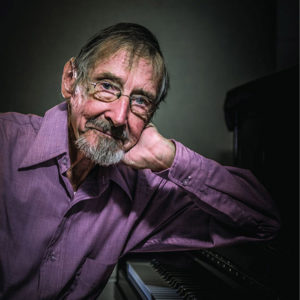
Carl Vollrath
Born in New York City to German parents, Carl Vollrath attended Newton High School. He received a B.A. from Stetson University, an M.A. from Columbia University, and an Ed.D. from Florida State University. Vollrath studied composition with Ernst von Dohnanyi Carlisle Floyd, and John Boda. He served with the West Point Military Band at West Point NY from 1953 to 1956 and was a music consultant in Miami FL from 1956 to 1958. He joined the Troy University (AL) faculty in 1965.Major works include six symphonies for band, an opera – The Quest – and a large collection of chamber music, all published by Tap Music (tapmusic.com). MMC Recordings has released three albums of Vollrath’s works, including a two-disc album of clarinet works recorded by Richard Stoltzman entitled Jack’s Fat Cat (2008).
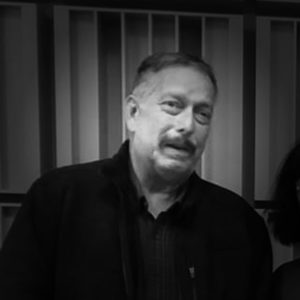
Marvin J. Carlton
Marvin J. Carlton is an American composer of opera, art song, symphonic works, choral works, and chamber music. His micro-opera 3D's DANCE HALL won the audience choice award at The Atlanta Opera's 24-Hour Opera Project in 2013, while his opera PIE, PITHE, AND PALLETTE won the judge's award in 2016. His music has been heard in concerts by Belleville (IL) Philharmonic Chorale, Centralia (IL) Philharmonic Orchestra, The Atlanta Opera, International Double Reed Society, St. Martin Chamber Players, Heart of Illinois Woodwind Quintet, The American Patriot Wind Ensemble, the Southern Illinois Grade School Vocal Music Association, and One Ounce Opera (Austin, Tx).
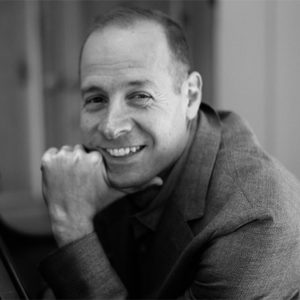
Andrew Lewinter
Before turning his attention to composition, Andrew Lewinter had a long and varied career as an orchestral horn player and soloist. As a composer, Lewinter has a decidedly tonal and neo-romantic style that is often very contrapuntal and always emotionally gripping. His works include sonatas for each of the brass instruments and piano, a quartet for trumpet, horn, trombone and piano, quintets for both horn and string quartet and oboe and string quartet, a woodwind quintet, a string quartet, and a trio for oboe, horn, and piano, among other works scored for a variety of chamber ensembles. Lewinter’s compositions have been widely performed and recorded, and are available on Navona Records and Ablaze records.
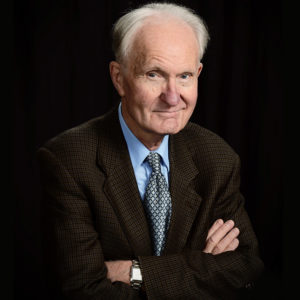
Allen Brings
A native of New York City, Allen Brings received a Bachelor of Arts degree magna cum laude from Queens College and a Master of Arts degree from Columbia University, where he was a Mosenthal Fellow and a student of Otto Luening, and a doctorate in theory and composition from Boston University, where he was a teaching fellow and a student of Gardner Read.
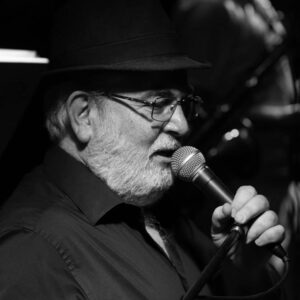
Kenneth Eggert
Kenneth Eggert (b. 1969) began his musical career at age 10, with a love of music theatre and an obsession with the music of Billy Joel. After starting his first of many bands at age 12, he began writing songs for them, which led him to eventually study Music Composition at Carnegie-Mellon University with Marilyn Taft Thomas. Feeling more comfortable at that time in the realm of rock and jazz, he transferred to Berklee College of Music as a Film Scoring major, and then left school to pursue a career in performance.
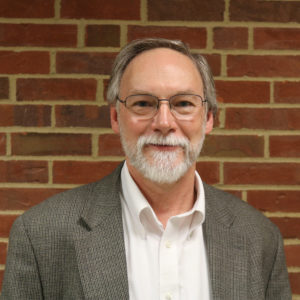
Charles Savage
Charles M. Savage (b. 1958) born in Coshocton, Ohio and a longtime resident of Muskingum County, Ohio. He graduated from Ohio Valley University, Harding University with a B.A. in Music Education, and Ohio University Athens with masters degrees in Music Theory and Composition, and in Music Education. He studied theory and orchestration with William Holloway, and composition with Mark Phillips, voice with Erle. T. Moore and Ira Zook, and conducting with Kenneth Davis, Jr. and Peter Jarjisian.
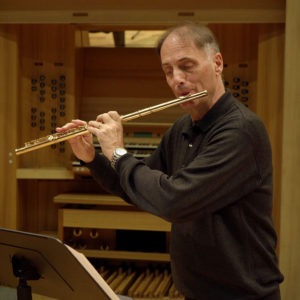
Dieter Flury
Dieter Flury was born and brought up in Zurich (Switzerland) and studied with Hans Meyer (Principal Flute of the Tonhalle Orchestra Zurich), André Jaunet (at the Zurich Music Academy), and Aurèle Nicolet. In addition to his flute studies he graduated in mathematics at the Federal Institute of Technology in Zurich. At age 25 he was appointed a member of the Vienna State Opera Orchestra and in 1981 he was named Principal Flute of the Vienna Philharmonic Orchestra.
